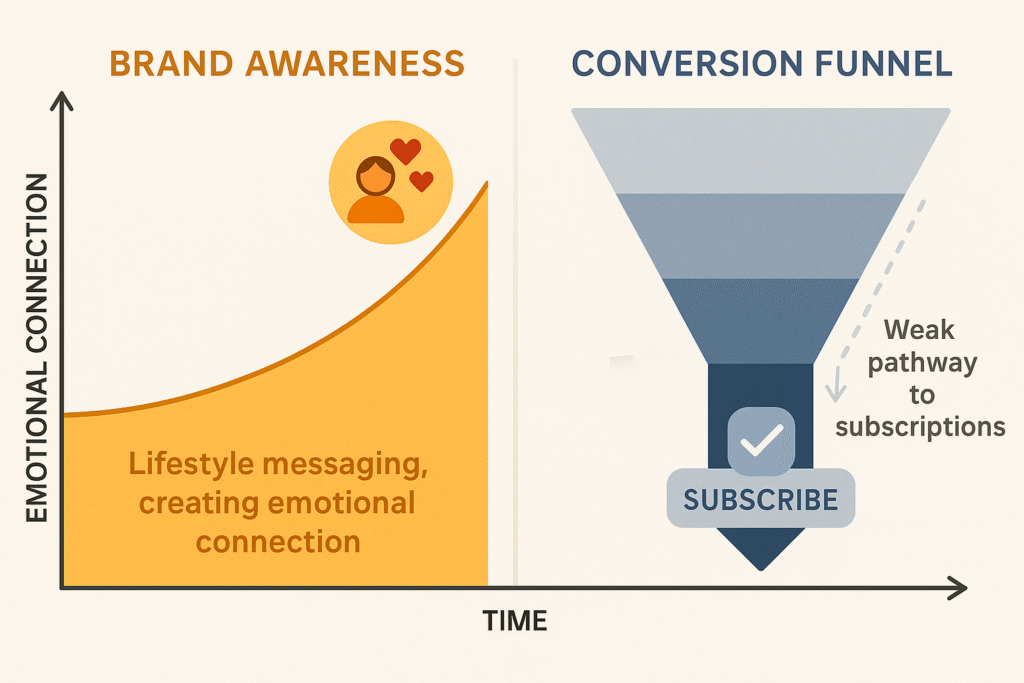When India’s fitness icon admits to being lazy, what does it say about our relationship with rest—and the brands that promise to deliver it?
- The Art of Strategic Contradiction
- Permission-Based Brand Positioning
- The Authenticity Question
- The Demographics of Leisure
- Content Strategy Disconnect
- Competitive Context and Market Timing
- The Execution Assessment
- Production Quality Analysis
- Social Media Optimization
- Strategic Recommendations for Evolution
- Demographic Expansion Opportunities
- Content Integration Strategy
- Cultural Sensitivity Measures
- Conversion Optimization
- Long-Term Brand Implications
- Brand Building vs. Transactional Marketing
- Success Measurement Framework
- The Measurement Challenge
- Attribution Complexity
- Cultural Impact and Industry Implications
- Long-Term Cultural Positioning
- The Final Analysis
- Strategic Assessment Summary
- Market Impact Prediction
The advertisement opens with a familiar refrain: “Milind Soman, jab dekho tab active.” It’s a statement that needs no elaboration for any Indian who has followed the country’s fitness trends over the past two decades. Soman—runner, model, actor, and wellness evangelist—has built his public persona on the foundation of relentless physical activity. At fifty-nine, he continues to inspire millions through marathon runs, beach workouts, and social media posts that chronicle his seemingly inexhaustible energy.
Which makes Prime Video’s latest campaign all the more intriguing. In “Even Milind Hits Pause,” the streaming platform does something unexpected: it asks India’s poster child for perpetual motion to advocate for stillness. The result is a minute-and-twenty-three-second meditation on permission, productivity, and the cultural complexities of rest in modern India.
The Art of Strategic Contradiction
The genius of Prime Video’s approach lies not in what it says, but in who says it. Celebrity endorsements in India typically follow predictable patterns—cricket stars selling everything from cement to mobile phones, Bollywood actors lending their glamour to luxury brands, and fitness influencers promoting protein supplements. The logic is straightforward: match the celebrity’s image with the product’s aspirational qualities.
Prime Video’s campaign inverts this formula entirely. By casting Soman—a figure synonymous with activity—as the spokesperson for relaxation, the brand creates what psychologists term cognitive dissonance. The viewer’s brain struggles to reconcile the known (Milind is always active) with the presented (Milind advocates for lazy days), creating a mental friction that demands resolution.
“Hamesha nahi, kabhi kabhi main bhi lazy ho jaata hoon,” Soman admits in the video, his casual tone suggesting this revelation is both surprising and liberating.
The cultural intelligence behind this choice becomes apparent when considered against India’s current wellness landscape. Urban professionals find themselves trapped between competing narratives: traditional Indian values that equate hard work with moral virtue, and modern wellness culture that promotes optimization, productivity, and constant self-improvement. Social media feeds overflow with morning routine videos, workout transformations, and productivity hacks, creating an exhausting cycle of comparison and guilt.
In this context, Soman’s admission carries revolutionary weight. If someone whose livelihood depends on maintaining peak physical condition can acknowledge the need for rest, perhaps the rest of us can too.
Permission-Based Brand Positioning

The campaign’s psychological framework extends beyond celebrity casting to its core messaging strategy. “Lazy nahi huye, toh crazy ho jaaoge”—if you don’t get lazy, you’ll go crazy—represents more than clever wordplay. It positions laziness not as moral failing but as psychological necessity, reframing what Indian culture has traditionally viewed as indulgence into wellness wisdom.
This approach reflects a sophisticated understanding of consumer psychology, particularly the emerging preference for permission-giving brands over aspirational ones. Research in behavioral economics suggests that consumers respond more favorably to brands that reduce guilt and anxiety rather than those that amplify aspiration and striving.
Prime Video’s positioning is especially acute given the platform’s natural consumption context. Unlike social media or productivity apps that demand engagement and activity, streaming services succeed when users surrender control, settle into passive consumption, and allow themselves to be entertained. The brand’s challenge lies in making this passivity feel not just acceptable but beneficial.
The tagline “Happy lazy day!” serves as both permission and prescription.
It doesn’t merely acknowledge lazy days as inevitable; it celebrates them as desirable. This semantic shift—from guilty pleasure to wellness practice—demonstrates sophisticated brand thinking that transcends traditional entertainment marketing.
The Authenticity Question
What distinguishes this campaign from countless other celebrity endorsements is its commitment to conversational authenticity. The video unfolds through seemingly natural interactions: journalists commenting on Soman’s constant activity, casual conversations that build to his lazy day revelation, and the organic integration of Prime Video as the solution to wellness-induced relaxation needs.
The production values resist the polished perfection that characterises most celebrity advertising. Soman appears relaxed, conversational, and genuinely reflective rather than performing scripted enthusiasm. The bilingual dialogue flows naturally between Hindi and English, matching the code-switching patterns of urban Indian speech rather than forcing linguistic choices for demographic targeting.
This authenticity extends to the brand integration itself.
Prime Video’s presence feels inevitable rather than intrusive—a natural companion to the lazy day philosophy rather than its commercial motivation.
The restraint is remarkable in an advertising landscape where brands typically demand centre stage in their own campaigns.
Yet this authenticity raises questions about its own construction. How natural can a carefully orchestrated campaign truly be? The video’s apparent spontaneity is, inevitably, the result of strategic planning, market research, and creative execution. The challenge for viewers—and for the brand—is whether this constructed authenticity feels genuine enough to drive emotional connection and, ultimately, subscription behaviour.
The Demographics of Leisure
For all its strategic sophistication, the campaign suffers from a limitation that plagues much of India’s premium brand marketing: demographic tunnel vision. Soman’s lifestyle—luxury home, flexible schedule, financial freedom to choose laziness over productivity—speaks exclusively to affluent urban consumers who possess the privilege of guilt-free leisure.

The campaign’s conception of “lazy days” assumes certain economic realities: stable employment that permits breaks, living situations conducive to relaxation, and discretionary income for entertainment subscriptions. These assumptions exclude vast segments of the Indian market for whom leisure remains a luxury rather than a wellness practice.
Consider the missing voices: the Mumbai office worker whose “lazy day” means sleeping past 7 AM before household responsibilities begin, the small business owner in Pune whose only screen time happens during late-night unwinding after sixteen-hour workdays, or the college student in Kolkata who streams content on mobile data between study sessions and part-time work.
These demographic blind spots matter not just for inclusivity but for business sustainability. India’s streaming market success depends on broad adoption across economic segments, not just affluent early adopters. Prime Video’s premium positioning may build brand prestige among urban elites while alienating the mass market demographics that determine long-term growth.
The campaign also assumes cultural comfort with leisure that doesn’t exist uniformly across Indian communities. In many contexts, publicly celebrating lazy days conflicts with deeply held values about work ethic, family responsibility, and social contribution. What reads as wellness wisdom in Bangalore’s startup ecosystem might feel tone-deaf in communities where leisure remains associated with privilege rather than self-care.
Content Strategy Disconnect
Perhaps the campaign’s most significant strategic vulnerability lies in what it doesn’t show: Prime Video’s actual content. For a platform competing on the strength of its programming—original series, Bollywood films, regional cinema, international shows—the complete absence of content messaging represents a puzzling choice.
The lazy day concept offers natural opportunities to showcase Prime Video’s diverse offerings. What makes a Prime Video lazy day different from a Netflix marathon or a Disney+ Hotstar session? The campaign provides no answers, creating a strategic void that competitors could easily exploit.
This disconnect becomes more problematic when considered against Prime Video’s content strategy in India. The platform has invested heavily in regional programming, local originals, and culturally specific storytelling designed to appeal beyond metropolitan markets. None of this investment appears in a campaign that could demonstrate why Prime Video specifically enhances lazy day experiences.
The messaging also conflicts with Prime Video’s recent introduction of advertising in India. How does a brand promise of uninterrupted relaxation align with ad-supported viewing experiences? The campaign promotes lazy days without acknowledging that those days will now include commercial interruptions that fundamentally alter the consumption experience.
Competitive Context and Market Timing

The campaign arrives at a crucial moment in India’s streaming wars. With multiple platforms competing for subscriber attention and advertising revenue, differentiation strategies become increasingly important. Prime Video’s choice to focus on lifestyle positioning rather than content superiority represents a significant strategic gamble.
Netflix has consistently emphasized content quality and viewing experiences in its Indian marketing. Disney+ Hotstar leverages live sports and cultural events that create appointment viewing occasions. In this context, Prime Video’s pure lifestyle positioning feels both distinctive and vulnerable.
The emotional differentiation strategy has merit—research consistently shows that brand affinity drives subscription retention more effectively than feature comparisons. However, in India’s price-sensitive market, lifestyle messaging may prove insufficient without supporting product benefits that justify subscription costs.
The campaign’s timing also coincides with broader cultural conversations about work-life balance, mental health, and productivity culture in urban India. The COVID-19 pandemic accelerated discussions about sustainable work practices and the importance of rest, creating cultural context that supports Prime Video’s permission-based messaging.
Yet this cultural moment may be fleeting. As economic pressures increase and competition for employment intensifies, the luxury of celebrated lazy days may feel less relevant to consumers focused on professional survival and advancement.
The Execution Assessment
From a production standpoint, the campaign demonstrates technical excellence that serves its strategic goals. The cinematography captures aspirational domestic comfort without feeling ostentatious. Soman’s performance balances relatability with authority, acknowledging his fitness credentials while undermining them just enough to create authenticity.
Production Quality Analysis
The bilingual approach reflects genuine understanding of Indian communication patterns rather than the forced localization that often characterizes global brand efforts in India. The conversation flows naturally between Hindi and English, matching the linguistic reality of Prime Video’s target demographic.
The duration—just over a minute—strikes an optimal balance for digital distribution. Long enough to develop the conceptual premise and emotional connection, short enough to maintain attention and encourage sharing across social platforms.
Social Media Optimization
However, the campaign’s social media optimization reveals limitations. While the premise offers shareability potential, the execution lacks the memorable moments or quotable lines that drive organic amplification. The tagline “Happy lazy day!” feels corporate rather than conversational, missing opportunities for user-generated content and cultural penetration.
Strategic Recommendations for Evolution
The campaign’s foundation is strong enough to support strategic evolution that addresses its current limitations. Future iterations could expand demographic representation without abandoning the core insight about permission and rest.
Demographic Expansion Opportunities
Diverse Scenarios: Feature diverse lazy day scenarios across income levels and geographies. A working parent in Hyderabad finding thirty minutes for a web series, a group of friends in Ahmedabad sharing a Bollywood classic on weekend afternoons, or a retired couple in Chennai discovering regional content together. These scenarios maintain the permission-based messaging while speaking to broader market segments.
Content Integration Strategy
Balanced Messaging: Balance lifestyle positioning with subtle content previews that justify Prime Video’s specific value proposition. Show glimpses of exclusive series, regional programming, or content categories that enhance different types of relaxation without overwhelming the wellness message.
Cultural Sensitivity Measures
Regional Testing: Test messaging across regional markets to ensure lazy day concepts resonate positively rather than conflicting with local work values and leisure perceptions. This might involve adapting the campaign for different cultural contexts rather than assuming universal appeal.
Conversion Optimization
Clear Pathways: Include subtle subscription offers or trial promotions that create clear pathways from brand interest to platform engagement. The current campaign builds awareness without facilitating action, wasting potential customer acquisition opportunities.
Long-Term Brand Implications
This campaign represents Prime Video’s attempt to transcend the traditional features-and-benefits approach to streaming service marketing. By focusing on emotional benefits rather than content catalogs or technical specifications, the brand seeks to create deeper consumer connections that resist competitive pressure.
Brand Building vs. Transactional Marketing
The strategy has precedent in successful lifestyle brand building across categories—from Nike’s focus on athletic aspiration to Apple’s emphasis on creative expression. These brands succeeded by making their products secondary to the lifestyle identities they enabled.
However, streaming services face unique challenges in lifestyle positioning. Unlike physical products that become part of daily routines and social signaling, streaming platforms remain largely invisible in consumer lives. The value derives from content consumption rather than brand association, making lifestyle positioning more difficult to sustain.
Success Measurement Framework
The campaign’s success will ultimately depend on whether Soman’s permission to be lazy translates into Prime Video subscriptions and, more importantly, sustained engagement with the platform’s content offerings. If consumers embrace the lazy day message but choose Netflix for better shows, the strategy fails regardless of its creative excellence.
The Measurement Challenge

Evaluating this campaign’s effectiveness requires metrics that extend beyond traditional advertising measurement. Brand awareness and recall matter, but conversion rates and subscription growth provide the ultimate success indicators.
Attribution Complexity
The challenge lies in attribution. How much of any subscription growth can be attributed to lifestyle messaging versus content releases, competitive pricing, or market expansion? The campaign’s soft-sell approach makes direct measurement particularly difficult.
More sophisticated measurement might track sentiment analysis around lazy day messaging, social media engagement with wellness-related content, and qualitative feedback about Prime Video’s brand perception. These softer metrics could provide early indicators of whether the positioning strategy is creating the desired emotional connections.
Cultural Impact and Industry Implications
Beyond its immediate commercial objectives, the campaign contributes to broader cultural conversations about productivity, wellness, and the role of entertainment in modern life. By giving consumers permission to be lazy, Prime Video participates in ongoing discussions about sustainable work practices and mental health awareness.
Long-Term Cultural Positioning
This cultural positioning could prove more valuable than immediate subscription growth. If Prime Video becomes associated with wellness-conscious consumption and guilt-free entertainment, the brand builds long-term equity that transcends specific content offerings or competitive features.
The campaign also sets precedent for other entertainment brands considering lifestyle positioning over product marketing. Its success or failure will influence how streaming services, and perhaps other digital entertainment platforms, approach brand building in culturally diverse markets.
The Final Analysis
“Even Milind Hits Pause” represents sophisticated strategic thinking executed with cultural intelligence and creative restraint. The contrarian celebrity casting, permission-based messaging, and authentic production values create genuine differentiation in a crowded marketplace.
Strategic Assessment Summary
Yet sophistication does not guarantee effectiveness. The campaign’s urban elite focus limits its addressable market. The content strategy disconnect creates competitive vulnerabilities. The weak conversion pathway wastes marketing investment potential.
Most significantly, the campaign embodies a fundamental tension in modern marketing: the difference between brilliant advertising and effective business strategy. The video succeeds as creative communication while potentially failing as customer acquisition tool.
“Lazy nahi huye, toh crazy ho jaaoge,” Soman observes, offering wisdom that extends beyond entertainment choices to broader questions about sustainable living in India’s ambitious urban landscape.
Whether this wisdom translates into sustainable competitive advantage for Prime Video remains the crucial unanswered question. In an industry where content is king and customer acquisition costs continue rising, lifestyle positioning must ultimately drive subscription behavior to justify its strategic investment.
Market Impact Prediction
The campaign will likely generate significant social media engagement and positive brand sentiment among urban professionals—metrics that matter for brand building but may prove insufficient for business growth. Whether Prime Video can convert cultural relevance into commercial success will determine not just this campaign’s fate but the viability of lifestyle positioning in India’s brutally competitive streaming landscape.
In essence, Prime Video has created brilliant advertising that may not be effective marketing—a distinction that could prove costly in the platform’s ongoing battle for Indian streaming supremacy. The lazy genius of the creative concept must now prove its commercial worth in a market where cultural insights alone rarely guarantee business success.
The campaign’s true test will come not in creative awards or social media buzz, but in the quarterly subscriber numbers that determine streaming success. Until then, it remains a fascinating experiment in cultural positioning that reveals as much about Indian attitudes toward rest and productivity as it does about Prime Video’s strategic ambitions.
